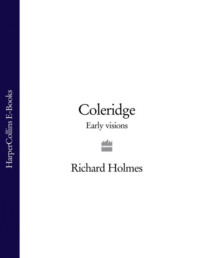Sadece Litres'te okuyun
Kitap dosya olarak indirilemez ancak uygulamamız üzerinden veya online olarak web sitemizden okunabilir.
Kitabı oku: «Coleridge: Early Visions», sayfa 4
Bir şeyler ters gitti, lütfen daha sonra tekrar deneyin
₺300,62
Türler ve etiketler
Yaş sınırı:
0+Litres'teki yayın tarihi:
29 aralık 2018Hacim:
625 s. 10 illüstrasyonISBN:
9780007378838Telif hakkı:
HarperCollins